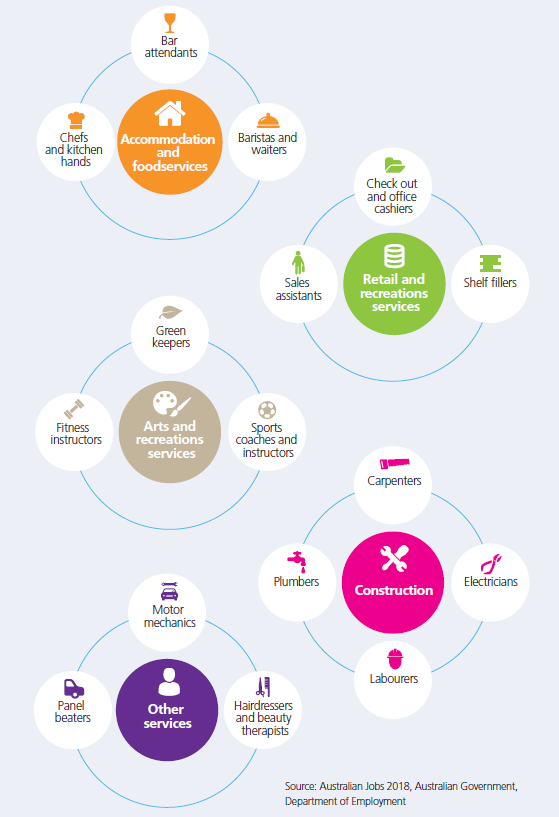We work with young people, education and training providers, and industry and government agencies to improve health and safety outcomes for young workers.
If you’re an employer thinking about taking on a young worker, you need to understand your respective rights and responsibilities around work health and safety and employment conditions.
Attitudes & risks
Many young workers lack experience, maturity and awareness when they start out in the work force.
New or young workers:
- have a higher risk of injury in their first year
- are still developing their skills, competencies and physical capabilities
- are unfamiliar with appropriate workplace behaviour
- don't know who to talk to about health and safety or where to find information
- are unaware of their rights and responsibilities at work
- are unaware of their WHS responsibilities and the duties of their employer
- may assume the equipment or tools they work with are safe
- may not be aware of potential hazards associated with the work they are doing or is being done around them
- are reluctant to ask questions or speak out about problems or safety concerns; worried that they may lose their job or cause trouble
- are overly keen to please and make a good impression
- are over-confident of their capabilities.
It is important that young people understand their work health and safety responsibilities when they enter the workforce. As new workers they may lack the experience and knowledge to understand risks and so it is essential they are properly inducted, trained and supervised so they can work safely. As our future leaders, we aim to build their capability so they can become influencers of safe workplaces.
Induction & training
Provide new workers with:
- an induction into the business
- sufficient information, instruction, training and supervision to ensure that they are competent to work safely
- do not give workers tasks unless they have the necessary skills
- any necessary personal protective equipment (PPE)
- current health and safety policies and procedures; taking new workers through your procedures is a great way to convey safety standards and expectations
- time - encourage them to ask questions and make sure they are comfortable using plant and equipment safely.
Young worker injuries
Young workers injured 2018-23
Between 2018-23 young workers accounted for approximately 13% of all injuries.
The most common injuries were:
- laceration/wound
- soft tissue injury due to trauma
- trauma to muscles and tendons
- contusions, bruising and superficial crushing, and
- fractures.
Causes
- Being hit by moving objects
- Body stressing
- Trips, slips and falls
- Hitting objects with part of the body
- Vehicle incident, and
- Heat, electricity and other environmental factors.
Where young people are working and what they are doing

Further information
- Work health & safety for new & young workers
- New & young workers - understanding your responsibilities at work
- Young Workers eToolkit for young workers, employers, parents & guardians and educators - SafeWork NSW
- Young workers - Workplace Health and Safety Queensland
- Pay & employment conditions
- Apprentices & Trainees
- South Australian Skills Commission
- Employing people
- Employment and the law
- Vocational education and training
- Looking for work
- Rights at work
- Young workers and students - Fair Work Ombudsman
- Employing young workers best practice guide - Fair Work Ombudsman


